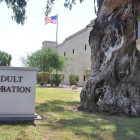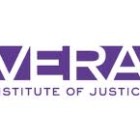
Vera Institute of Justice: Community Corrections Can Answer Mass Incarceration Problems
|
Community supervision aimed at high-risk offenders, as well as mandatory evidence-based programs, have the potential to curtail the U.S. correctional system.
Juvenile Justice Information Exchange (https://jjie.org/tag/vera-institute-of-justice/)

Community supervision aimed at high-risk offenders, as well as mandatory evidence-based programs, have the potential to curtail the U.S. correctional system.

NEW YORK - Photographer Richard Ross can’t pin down the moment he found his calling. It could have been on the concrete floor of the Harrison County Juvenile Detention Center in Biloxi, Miss., where he sat photographing a 12-year-old inmate in a yellow prison jumpsuit as he gazed at graffiti of spaceships and aliens scribbled on the wall of his tiny, decrepit cell. Maybe it was the young inmates trying to sleep on the floor of the intake room of a Los Padrinos Juvenile Hall in Los Angeles. Or the facility for young female offenders in California where the administrator told him all 88 residents were victims of sexual abuse. It could have been his visit with Ronald Franklin, who ran away from home at 13 after his mother tried to kill him, got involved in an armed carjacking and ended up in a Miami juvenile detention center where he waited four years without a trial.

Crossover youth is more than the latest buzzword in the often jargon-filled lexicon of juvenile justice. Instead, the term reflects a growing understanding of the dynamic between child abuse, neglect and delinquency. This population of young people has contact with both the child welfare and juvenile justice systems.
Addressing child welfare is challenging enough, let alone when joined with deeper problems of delinquency. Abused young people often carry scars of trauma and pain, which can inform delinquent behavior that leads to subsequent contact with the juvenile justice system. However, the complex challenges and needs of crossover youth often prove too much for each system alone to address.

A set of New York City nonprofits are working together to keep Rikers Island juvenile detention center residents from returning, and are using money from investment banker Goldman Sachs to do it. About half of the 16- to 18- year-old males who pass through Rikers Island will return within a year, according to David Butler, who’s heading the team working on the project at nonprofit social research organization MDRC. “Anything we can do to change that is good,” he said. MDRC will oversee the ABLE program, which will be mandatory for the young men at Rikers by the time it is fully rolled out in January 2013 for a four-year run. The Adolescent Behavioral Learning Experience is a method of teaching things like personal responsibility, anger management and impulse control with the aim of restructuring the student’s way of thinking. And it could not have been deployed on the Rikers scale, perhaps 3,400 students annually, without the cash Goldman Sachs agreed to provide.

Last week, the Vera Institute of Justice’s Center on Sentencing and Corrections and Cost-Benefit Analysis Unit released a new report entitled The Price of Prison: What Incarceration Costs Taxpayers. The report analyzed data from 40 states, estimating the total price American taxpayers paid in 2010 to fund corrections budgets, employee benefits, capital costs and healthcare services for inmates. The study projects that taxpayers paid almost $39 billion in the 2010 FY, which was more than $5 billion more than what the official corrections budgets originally projected. According to the report, Americans paid almost $2 billion to fund retiree health care programs for corrections employees, with another $1.5 billion going to fund state contributions to retiree health care and employee benefits, including health insurance. The report also factored in a number of other costs outside state corrections’ budgets that were funded by public dollars, including inmate services, legal judgments and claims, private facility costs and overlapping statewide administrative costs.